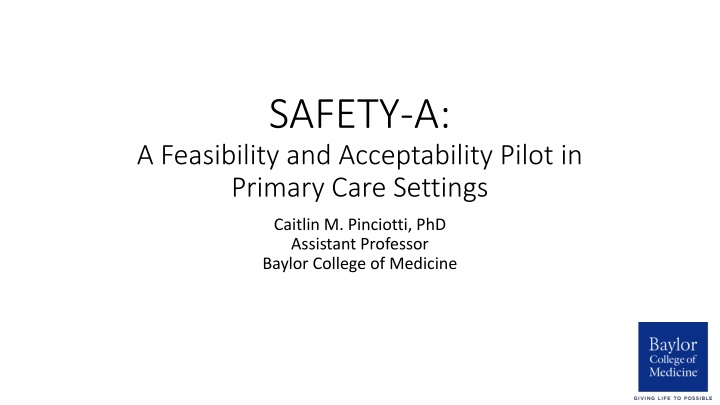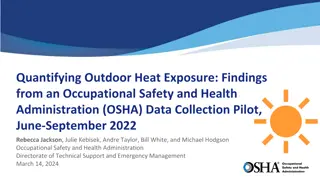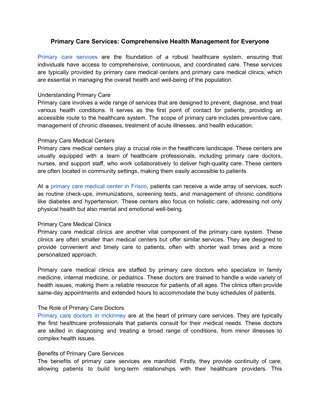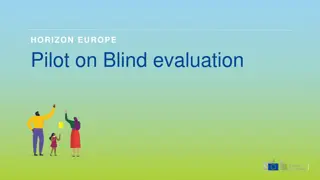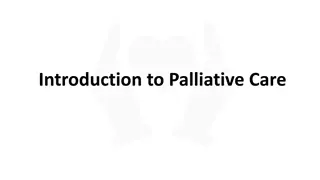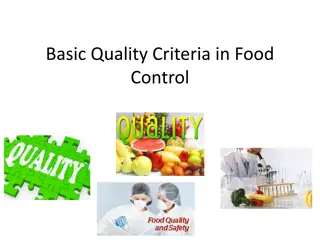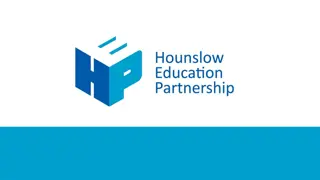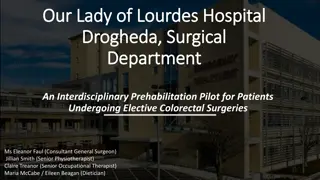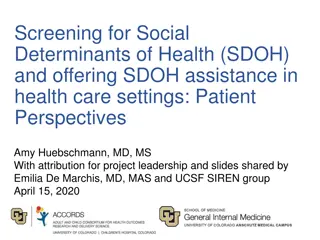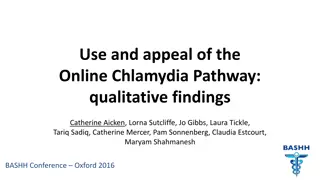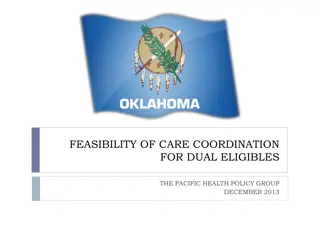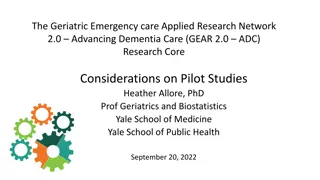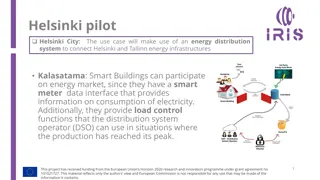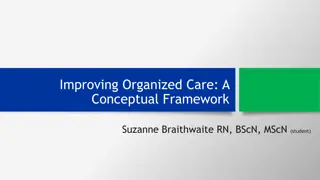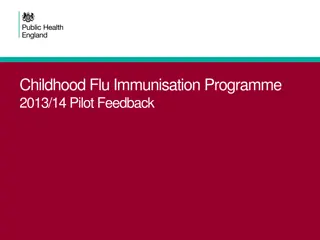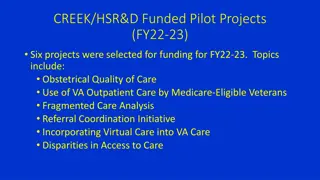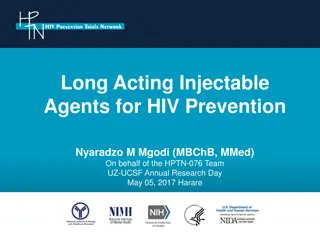Feasibility and Acceptability Pilot in Primary Care Settings
This pilot study evaluated the feasibility and acceptability of a training program for primary care providers in suicide risk assessment and intervention. Results show positive outcomes in training uptake and knowledge improvement, with areas identified for further enhancement in attendance and sustainability. Next steps involve ongoing data collection, feedback analysis, and scalability planning to enhance program effectiveness.
Download Presentation

Please find below an Image/Link to download the presentation.
The content on the website is provided AS IS for your information and personal use only. It may not be sold, licensed, or shared on other websites without obtaining consent from the author.If you encounter any issues during the download, it is possible that the publisher has removed the file from their server.
You are allowed to download the files provided on this website for personal or commercial use, subject to the condition that they are used lawfully. All files are the property of their respective owners.
The content on the website is provided AS IS for your information and personal use only. It may not be sold, licensed, or shared on other websites without obtaining consent from the author.
E N D
Presentation Transcript
SAFETY-A: A Feasibility and Acceptability Pilot in Primary Care Settings Caitlin M. Pinciotti, PhD Assistant Professor Baylor College of Medicine
Interest and registration for trainings exceeded expectations and goal of training 50 providers was met within 3 months. Totals by Site Row Labels BCM Texas A&M Texas Tech UT-Austin (Dell) UT-Houston UTMB Grand Total Count of Physician Totals by Cohort 17 10 5 13 16 9 70 Cohort A B C Grand Total Count of Physicians 22 28 20 70 * An additional 20 CPAN staff received SAFETY-A training
My knowledge regarding suicide risk assessment and risk reduction and intervention approaches for youth with suicide and self-harm risk increased. This training met my needs. 30 35 33 26 25 30 20 25 20 20 15 16 15 10 10 5 5 5 3 1 0 0 0 0 0 1 (Not at all) 2 3 4 5 (Very much) 1 (Not at all) 2 3 4 5 (Very much)
Out of 1,800+ depressed patients: 250 235 200 138 150 100 52 50 0 Total # of suicidal patients Total # of SAFETY-A evaluations completed # of providers who used SAFETY-A
Areas for Improvement Attendance in consultation calls Only 20% of PCPs attended all 5 Understand reasons for non-attendance Understand reasons for non-SAFETY-A use Feasibility in PCP setting? Competence? Sustainable training model without payments?
Next Steps Data collection to continue through Nov. Elicit reasons for PCP non-attendance/use Analyze feedback and data Plan for scaling up
